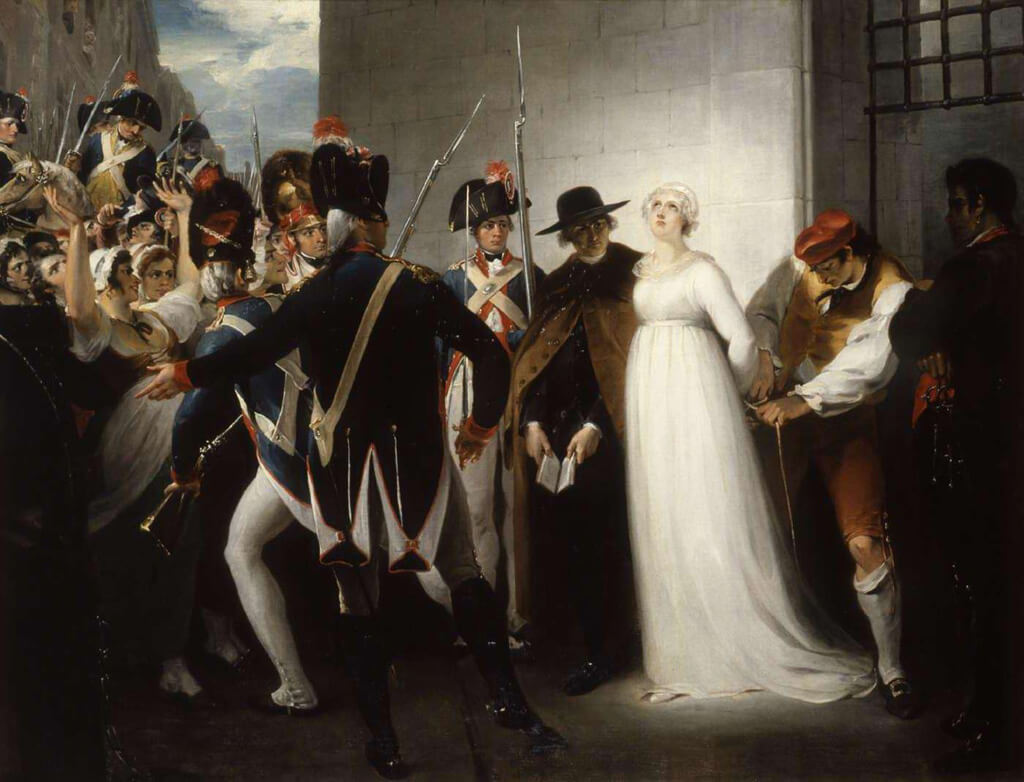Chateaubriand called it “perhaps the most remarkable monument in Paris.” La Chapelle Expiatoire (the Expiatory Chapel) is one of those hidden gems which blends history, art, and architecture and offers a quiet oasis not far from the bustle and hustle of the Grands Boulevards.
Built on the location of an ancient cemetery (le Cimitière de la Madeleine) which received hundreds of corpses during the revolutionary days, the Chapel was erected at the exact point where King Louis XVI and Marie-Antoinette were buried after their execution in 1793.
In 1814 France restored the monarchy with King Louis XVIII. It was King Louis XVIII, King Louis XVI’s brother, who ordered the transfer of the remains of the royal couple to the Basilica of Saint-Denis, the burial place of the Kings of France. The King also commissioned the construction of the Chapelle Expiatoire to honor their memory.
Designed by the architect Fontaine (1816-1826), the Chapelle Expiatoire’s main purpose was to ask for pardon on behalf of France.

X
Chapelle Expiatoire’s Architecture
Pierre-François-Léonard Fontaine was a Neoclassical French architect, interior decorator, and designer. He designed the Chapelle Expiatoire in a Neoclassical style, taking some elements from Roman and Greek antiquity, Middle Ages, and Renaissance. The decoration is very minimalist, reminding us that this Chapel is a memory place.
Inside the Chapel, we can find the sculptures of King Louis XVI and Queen Marie-Antoinette. King Louis XVI is ascending to Heaven with the help of an angel. The pedestal is engraved with the King’s testament, written before his execution.
We especially liked the sculpture called “Marie-Antoinette Soutenue par la Religion” (Queen Marie–Antoinette hold by Religion), designed by Jean Pierre Cortot in 1835. Queen Marie-Antoinette, downhearted, asks Religion for help, and Religion shows her the cross. Religion, a veiled woman, has the traits of Madame Elisabeth, the King’s sister.
Madame Elisabeth was the Queen’s main support during her confinement in the Tour du Temple. The King’s sister was the recipient of a very poignant (and beautiful) last letter from Queen Marie-Antoinette just a few hours before her death.
The altar in the crypt marks the exact location of the King’s body exhumation.

La Reine C’est Moi
The famous phrase “La Reine, c’est moi” (I am the Queen) by Madame Elisabeth is one of our favorite parts of this story. On confronting a mob intent on harming Queen Marie-Antoinette, she used their confusion about her identity and claimed she was the Queen to save her from harm.
Madame Elisabeth also passed through the guillotine in 1794.
The Swiss Guards’ Tombs
Visitors access this nostalgic place through an alley flanked by some tombs. These tombs are just symbolic, they remind us of the Swiss Guards, the soldiers who died at the King’s service in 1792.
On this green space in front of the Chapel, we can also find many kinds of trees symbolizing the different social classes, all victims of the French Revolution.

Marie-Antoinette’s Execution

Since their fleeing and arrest at Varennes in June 1791, the fate of the Royal Family was in suspense. The insurrectionary day of August 10, 1792, was to tragically seal their future.
King Louis XVI, accused of high treason, amongst other things, was executed on January 21, 1793.
Queen Marie-Antoinette, instead, was locked in the Temple prison with her children and her sister-in-law. While internal and external difficulties threatened to overthrow the young Republic, Queen Marie-Antoinette (symbol of the Old Regime) was separated from her children and transferred to the Conciergerie.
On October 3, the Convention decided to bring her before the Revolutionary Court. On the 15th, after a quick trial where she was even accused of incest, the Court sentenced the Queen to death for the crime of high treason.
Queen Marie-Antoinette went through the guillotine at Place de la Révolution (today Place de la Concorde) on October 16 at a quarter past twelve. It is said that on the scaffold, she would have walked on the executioner’s foot and said: “Oh sorry, my apologies, I did not do it on purpose.”
Chapelle Expiatorie, Paris – Practical Info
La Chapelle Expiatoire is located at Rue Pasquier, Paris 75008; M. Saint Agustin, L9; Vélib Station #8016
The Chapelle Expiatoire is open from Tuesday to Saturday, from 10h-12h30 and 13h30-17h from October to March, and from 10h-12h30 and 13h30-18.30h from April to September.
Tickets: Full price ticket costs 6€. There’s free admission for people under 18, people from 18-25 (citizens of the 27 countries of the European Union and non-European residents regularly resident in France). Also, it is possible to visit the Chapelle Expiatoire for free during special occasions like Les Journées du Patrimoine (usually by the end of September).
Click here for more Paris Hidden Gems
X
Some interesting articles in the blog
Pin it now & read it later


